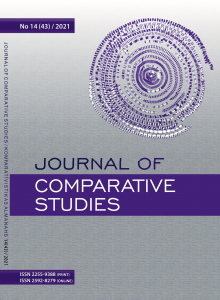Memory and Reflective Nostalgia in “To the Lighthouse” by Virginia Woolf and “The Go-Between” by L.P. Hartley
Keywords:
reflective nostalgia, nostos, algos, elegiac mode, pastoral modeAbstract
The mode of nostalgia for past happiness is central in contemporary
accounts of earlier epochs, and it becomes particularly visible in
British prose fiction set in the first half of the twentieth century. I
argue that in such accounts memories and recollections are shaped
by the mode of nostalgia. This paper focuses on the aspects of reflective
nostalgia as recently theorized by Svetlana Boym. It opens with a
short introduction into the history of nostalgia and the experience
of war for generating a nostalgic longing for the past. It also elaborates
on the etymological issues and implications suggested by concepts
of nostos [the return] and algos [pain]. I would argue that memories
featured in British twentieth-century prose fiction are influenced by
the workings of nostalgia which may be either idealizing or imbued
with pain and sorrow. Consequently, I claim that the focus placed
on the act of nostos promotes the interplay of nostalgia and the
pastoral mode; by contrast, the expression of algos rather selects
the elegiac mode. Thus, the paper seeks to prove that the different
foci of nostalgia influence the modality of the twentieth-century
prose fiction, as exemplified in ìTo the Lighthouseî by Virginia Woolf
and ìThe Go-Betweenî by L. P. Hartley.

